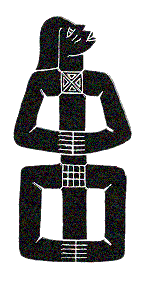Indian delegates attending the assembly on Monday treated other delegates to an
exciting display of the journey of Apostle Thomas, who took the gospel of Jesus Christ to
India in AD 52.
They retold the story of the birth and growth of the community of the Mar Thoma Syrian
Church through traditional dance, music and drama ... following St Thomas’
introduction of Christianity to the southwest coast of India after he was asked to go to
preach the gospel.
Initially, he was afraid: "I am an Hebrew man, how can I go amongst Indians and
preach the gospel?" Jesus urged him on, saying, "Fear not Thomas, you go to
India to preach the word there, for my grace is with you."
St. Thomas’ coming to India was depicted through the Mohinizattam dance, an ancient
dance originating in Kerala which emphasises hand movements and changing facial
expressions.
While in India, Thomas promised to build the king a beautiful castle but which the latter
would only be able to see in heaven.
Thomas gave away the money he was given to build the castle to the poor and could not
build the castle. The king threw him in prison but later pardoned him and even accepted
the gospel of Jesus Christ. Thomas in time attracted many people to the gospel and thus
was formed the Syrian Church of St Thomas.
In AD 72, he became a martyr at Madras, but the church continued as an exclusive community
with eastern traditions and liturgy. The arrival of the Portuguese in 1498 exposed the
Syrian church to a process of Latinization for over five decades.
Major differences between the beliefs and practices of the St. Thomas Christians and the
Roman Church emerged in papal supremacy, adoration of images and intercession of saints.
In 1653, the leaders of the Syrian church rejected the Roman Church. This is known as the
vow of the Coonen Cross.
In the 19th century, the Anglican Church came through its missionaries and there was a new
spirit revival. The Bible was translated into the local language to spread the word of
God. In 1889, the reformed group became the Mar Thoma Syrian church as it is known today.
The church today is evangelical, with the oldest national indigenous missionary movement
in India. For more than a century, it has been coordinating the Maramon Convention,
believed to be the largest Christian convention in the world with over 100,000 people
attending.
The church is also involved in social action and has established hospitals, orphanages,
counseling centres, schools, colleges and programs for street children.
The community has spread to Australia, Malaysia, Africa, Canada and the USA, and the light
that was brought to India by Apostle Thomas in AD 52 has spread all over the world.
Back to top



